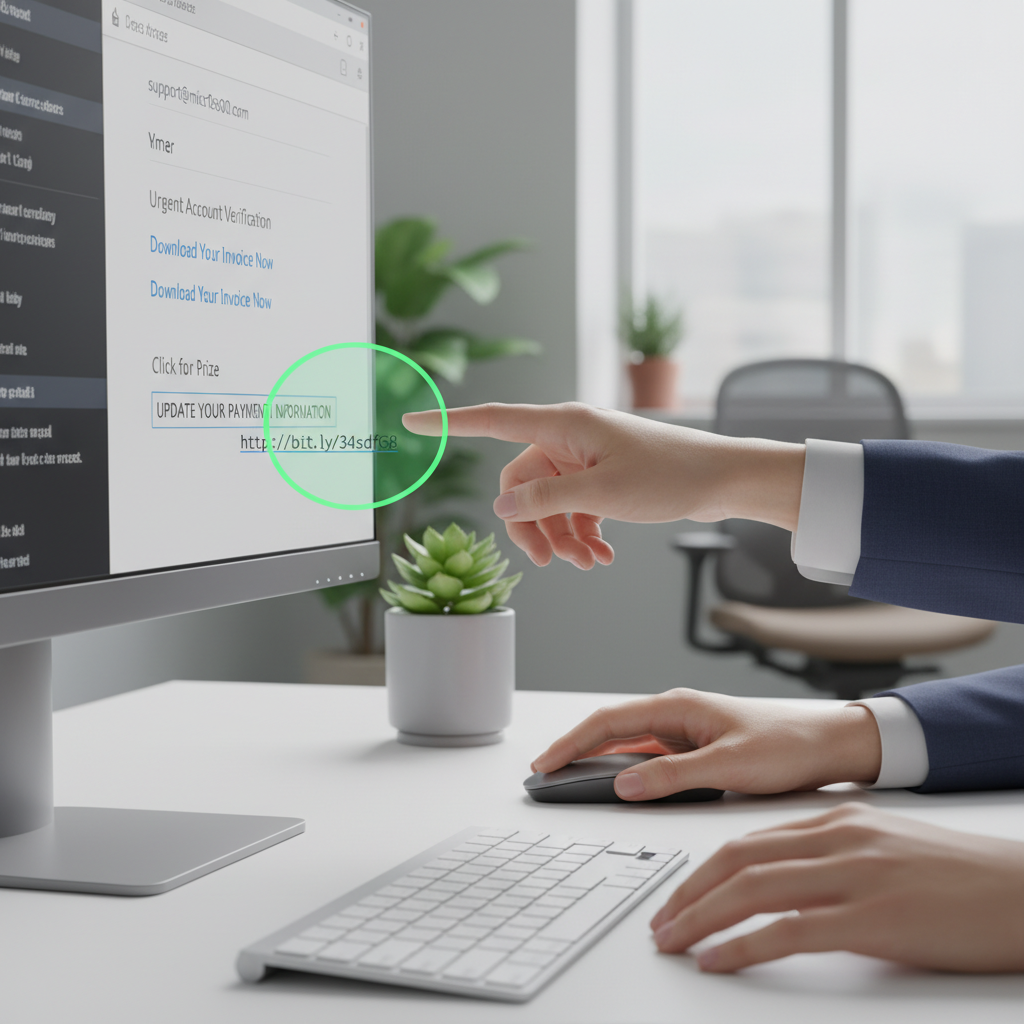
Table of Contents
Introduction
Phishing emails have become one of the most pervasive and dangerous forms of cyber threats today. Every day, millions of people receive emails that look legitimate but are cleverly crafted traps to steal sensitive information or install harmful software. Imagine opening your inbox and seeing what appears to be a harmless message from your bank or a popular online service, only to realize later that it was a scam designed to compromise your security. This growing threat can affect anyone, from individuals to large organizations, making the ability to detect phishing emails an essential skill for anyone connected to the internet.
Understanding the risks associated with phishing emails is crucial in our increasingly digital world. According to recent cybercrime reports, phishing attacks account for a significant percentage of data breaches and financial fraud incidents worldwide. These deceptive messages often lead to identity theft, unauthorized access to bank accounts, or the spread of malware that can paralyze entire networks. The emotional toll on victims, including feelings of violation, stress, and financial loss, can be profound. With cybercriminals constantly evolving their tactics, staying informed and vigilant is more important than ever.
Many people find themselves uncertain about how to recognize phishing emails because these scams are often designed to look convincing and urgent. They may use official logos, mimic writing styles, and create a sense of emergency to push recipients into quick action. This urgency often clouds judgment, leading many to unknowingly click on suspicious links or attachments. This scenario emphasizes the need not just for personal awareness but also for educating others and implementing organizational safeguards to reduce the risk and impact of phishing attacks.
Detecting phishing emails remains a cornerstone of personal and organizational cybersecurity. Whether you are protecting your personal information, safeguarding your workplace, or managing sensitive client data, knowing the signs of phishing attempts can significantly reduce the chances of falling victim. Cybersecurity education empowers you to act confidently and decisively, turning what could be a moment of vulnerability into an opportunity to strengthen your defenses. It also builds peace of mind knowing you are equipped to navigate your digital communications safely and securely.
What You’ll Learn in This Guide
This comprehensive guide will equip you with the knowledge and tools to confidently identify and handle phishing emails. We’ll cover key warning signs, inspection techniques, and response strategies to keep you protected from these common cyber threats.
- Understanding Phishing Email Basics: Learn what phishing emails are, their objectives, and how they operate to trick recipients into exposing sensitive information or downloading malware.
- Identifying Common Signs: Discover the key indicators that often reveal an email as a phishing attempt, including suspicious sender addresses, urgent language, unexpected links or attachments, and grammatical errors.
- Safe Inspection Techniques: Get practical advice on how to examine email headers and preview links safely without clicking, helping you verify authenticity before taking any action.
- Effective Response and Prevention: Understand the crucial steps to take if you suspect a phishing email, including reporting, deleting, and protecting your accounts, along with tips to maintain long-term security.
In the following sections, we’ll dive deeper into each aspect of detecting phishing emails. You’ll gain a clear understanding of what to watch for and how to respond appropriately to protect your data and devices. This knowledge will also help you educate your family, friends, and colleagues, creating a safer digital environment for everyone.
By reading this guide, you’ll gain valuable skills that not only prevent financial loss and identity theft but also contribute to a broader culture of cybersecurity awareness. Whether you’re an individual internet user or part of a larger organization, mastering the detection of phishing emails is a proactive step toward safeguarding your digital life.
Let’s take this journey together to empower you with the confidence and expertise needed to recognize phishing attempts and stay one step ahead of cybercriminals. Your digital safety starts here.

Phishing emails remain one of the most deceptive and damaging cyber threats today, making it vital for everyone to understand how to detect them effectively. These fraudulent messages are crafted to appear legitimate and often prey on urgent emotions to trick recipients into revealing sensitive information or downloading harmful software. As cybercriminals continually evolve their tactics, enhancing your ability to recognize phishing attempts is essential for protecting your personal data and financial security. This discussion will delve into the telltale signs of phishing emails and practical steps to identify and respond to these threats safely and confidently.
Common Signs of Phishing Emails
Identifying phishing emails hinges on recognizing certain warning signs that differentiate them from genuine communications. Awareness of these indicators not only empowers recipients to avoid scams but also helps mitigate potential damage from identity theft or financial fraud. Phishers often exploit trust and urgency to prompt immediate action, so understanding how these elements manifest in emails is crucial. By learning to scrutinize sender details, language used, and unexpected elements within messages, individuals can develop a more cautious and analytical approach to email interactions. This foundational knowledge forms the first line of defense against phishing threats.
Moreover, learning to spot errors in spelling and grammar or identifying suspicious links is vital since these often reveal the inauthentic nature of phishing emails. These mistakes can appear unprofessional and inconsistent with the standards maintained by legitimate organizations. Paying close attention to such inconsistencies helps recipients question the email’s authenticity before engaging with its content. For a detailed exploration of recognizing the characteristics of fraudulent emails, reviewing cybersecurity resources can be very helpful.
Key Aspects of Recognizing Phishing Emails
Below are some of the most common and important indicators of phishing attempts you should watch for:
- Suspicious Sender Addresses: Phishing emails often come from addresses that mimic legitimate organizations but have subtle differences such as misspellings, extra characters, or domain changes. These discrepancies can be easily overlooked but are key red flags indicating a fraudulent sender.
- Urgent or Threatening Language: Many phishing emails employ pressure tactics, warning of account closures, missed payments, or legal actions unless immediate action is taken. This urgency is designed to bypass rational judgment and provoke hasty responses.
- Unexpected Attachments or Links: Attachments you weren’t expecting may house malware, and links can redirect to fake login pages crafted to steal your credentials. Always be cautious of unsolicited files or URLs in emails.
- Poor Spelling and Grammar: Professional organizations usually maintain high standards in their communications. Phishing emails often contain spelling mistakes or awkward phrasing, which serve as clues to their malicious nature.
Steps to Take If You Suspect an Email Is Phishing
Once you have identified a suspicious email, taking the right actions promptly can protect your data and devices from harm. The best approach is to avoid interacting with the email itself and focus on securing your accounts and reporting the threat. Being proactive about digital safety reduces the chance of falling victim to these scams and helps thwart ongoing phishing campaigns targeting others. Learning how to respond correctly ensures that your vigilance makes a real difference in cybersecurity defense.
Additionally, implementing security measures following a phishing detection includes monitoring your accounts closely for unusual activity, especially if you believe you may have engaged with the malicious email initially. Changing passwords and enabling advanced security features like two-factor authentication significantly bolster protection. Reporting suspicious emails to your email service provider or employer contributes to broader awareness and preventive actions across networks. This coordinated effort is an essential part of maintaining a safer digital environment.
Important Actions When Facing a Suspected Phishing Email
Here are vital steps to follow if you suspect an email might be a phishing attempt:
- Do Not Click Links or Download Attachments: Avoid any interaction with links or attachments in the suspicious email to prevent malware infection or credential theft. Even previewing links should be done with caution using safe methods like hovering.
- Report and Delete the Email: Notify your IT department, email provider, or relevant authorities about the phishing attempt to help block similar threats. After reporting, securely delete the email from your inbox and trash folders.
- Change Passwords and Monitor Accounts: If you fear your information may be compromised, immediately update your passwords and enable security features such as two-factor authentication. Regularly monitor account statements and logs for any unauthorized activities as a precaution.

Conclusion
Recognizing phishing emails is essential in today’s digital world where cyber threats are increasingly sophisticated and widespread. Throughout this guide, we have explored what phishing emails are—fraudulent messages crafted to steal your personal information or install harmful software. By understanding the common signs, such as suspicious sender addresses, urgent or threatening language, unexpected attachments or links, and poor spelling and grammar, you are better equipped to identify these malicious attempts before falling victim. Vigilance and cautious evaluation of your inbox play a crucial role in reducing your risk of scams, identity theft, and financial loss.
Phishing attackers rely heavily on creating a false sense of urgency and trust to trick recipients into acting hastily. However, by taking the time to inspect email details carefully, you can safeguard your digital security. For example, always check the sender’s email address closely for odd spelling or domain changes. Hovering over links without clicking reveals the actual URL destination and can warn you of suspicious redirects. Avoid opening unexpected attachments, which may conceal malware. When in doubt, err on the side of safety by not interacting with the content. These simple yet effective habits form your first line of defense against phishing threats.
Once you suspect an email is a phishing attempt, it is vital to take swift and prudent action. Do not click on any links or download attachments within the suspicious message. Instead, report the email to your email provider, employer, or the appropriate authority. Then delete the email permanently from your inbox and trash folders to prevent accidental interaction later. Also, proactively change your passwords frequently, preferably enabling two-factor authentication whenever available. This extra layer of security helps protect your accounts even if login credentials are compromised. Consider using reliable email filters and updated security software to reduce the chances of phishing emails reaching your inbox in the first place.
Your ongoing vigilance and informed response to phishing emails contribute not only to your personal security but also to the wider community’s safety. Educating yourself and others about the evolving tactics of cybercriminals fosters a culture of cybersecurity awareness, making it harder for attackers to succeed. Remember, technology alone cannot prevent all threats; your careful attention and prudent actions are irreplaceable. With these tools and knowledge, you can confidently navigate your emails, avoid scams, and protect your sensitive information from cyber threats. Stay alert, stay safe, and keep strengthening your defenses against phishing attacks every day.
